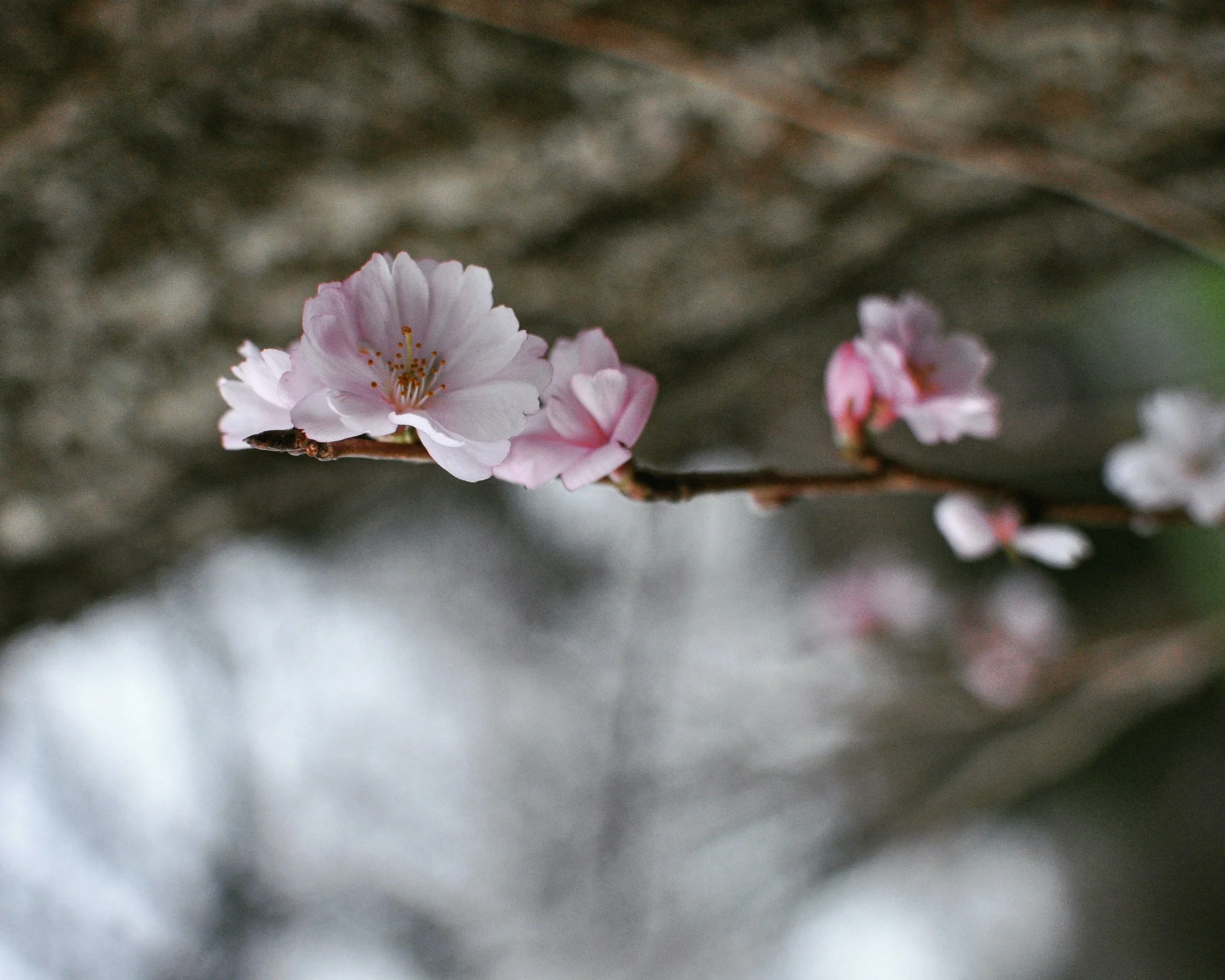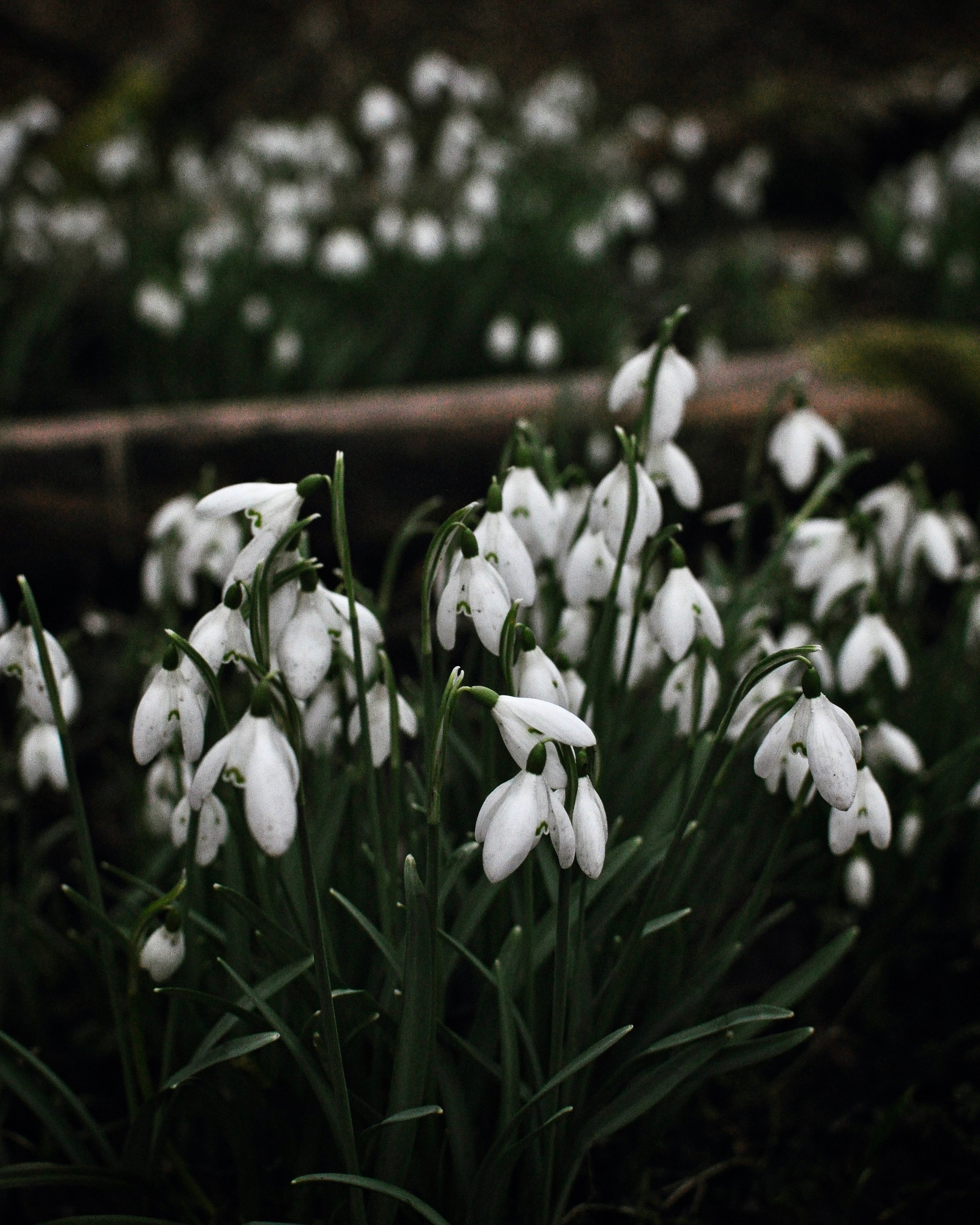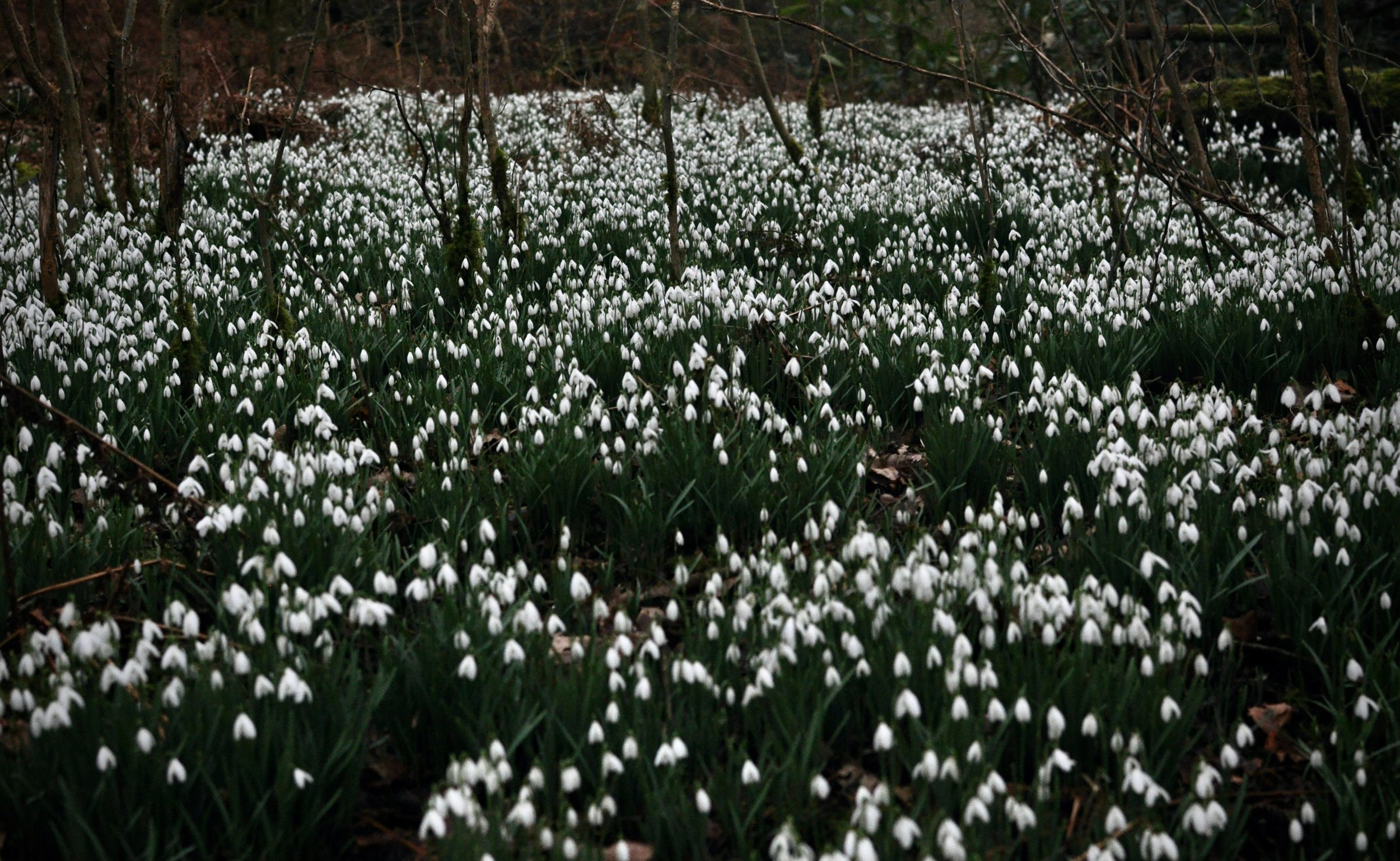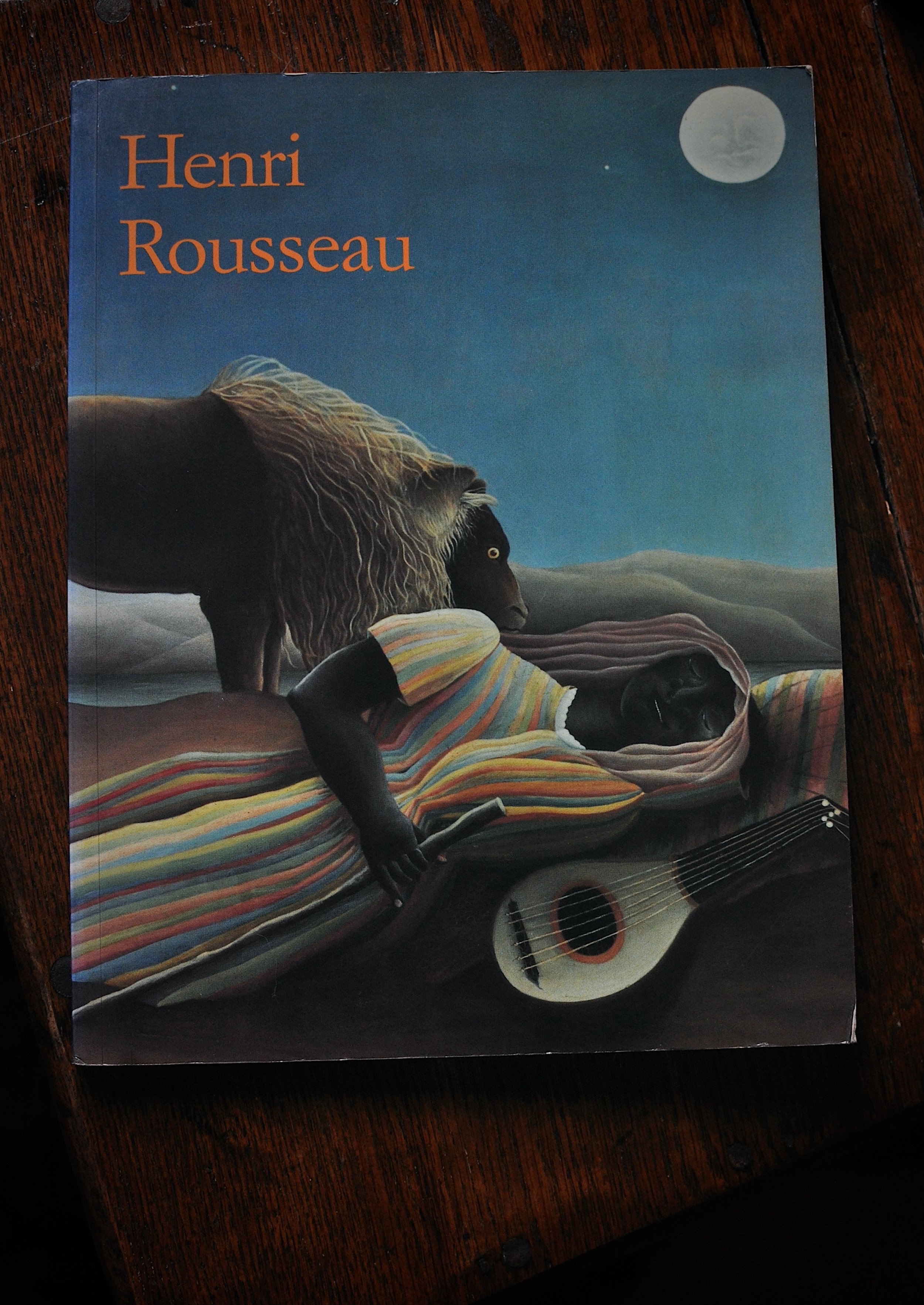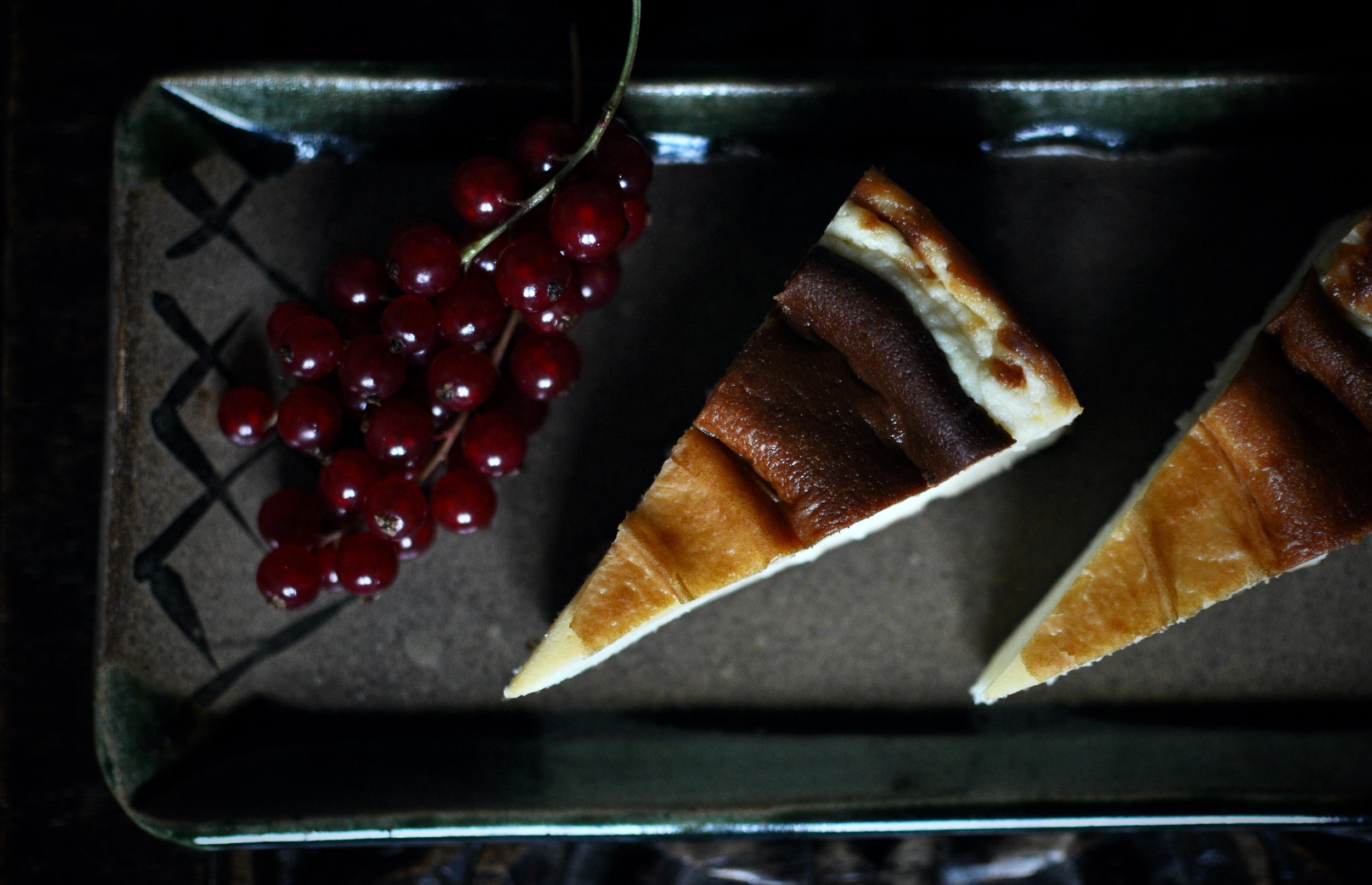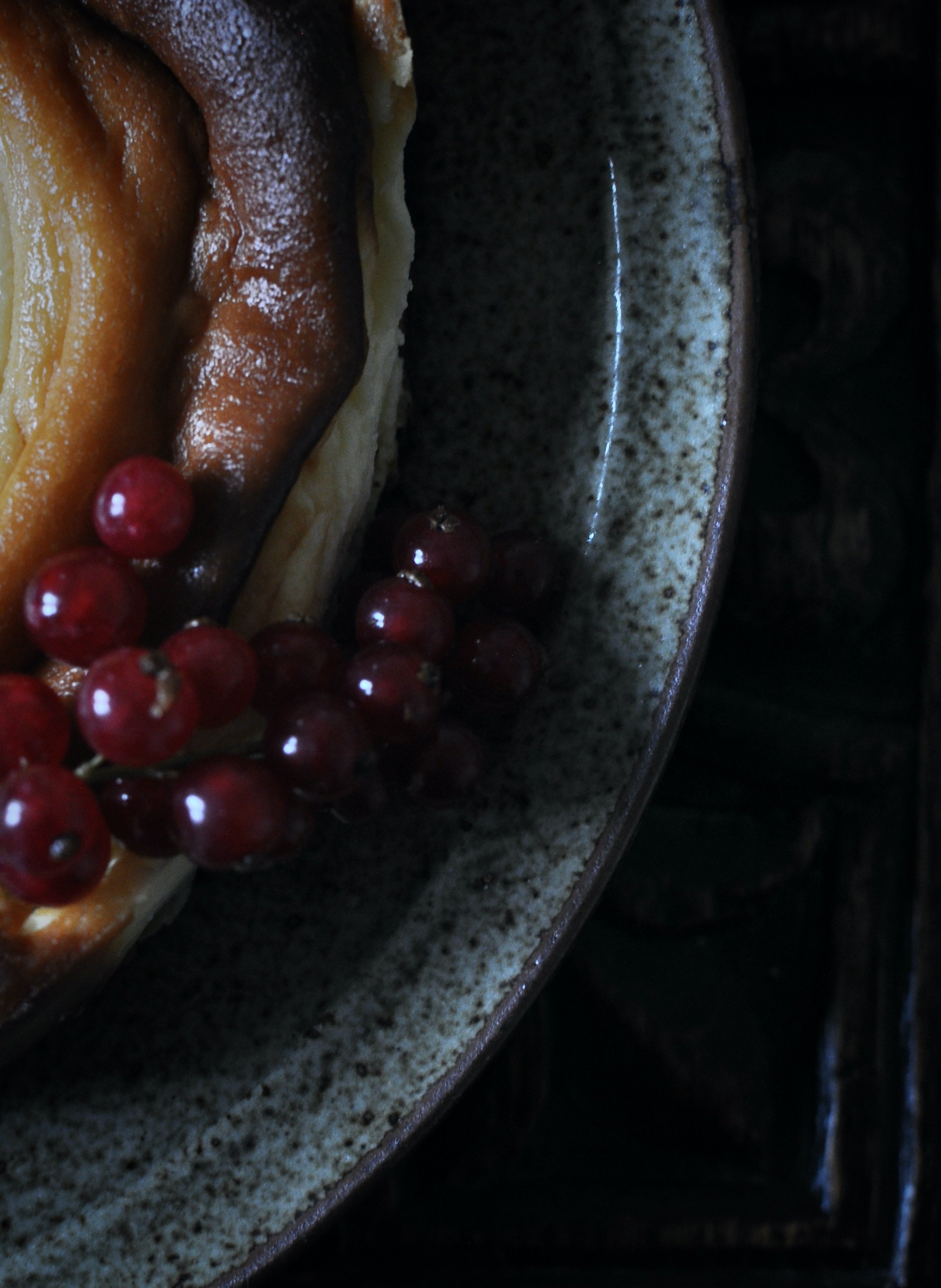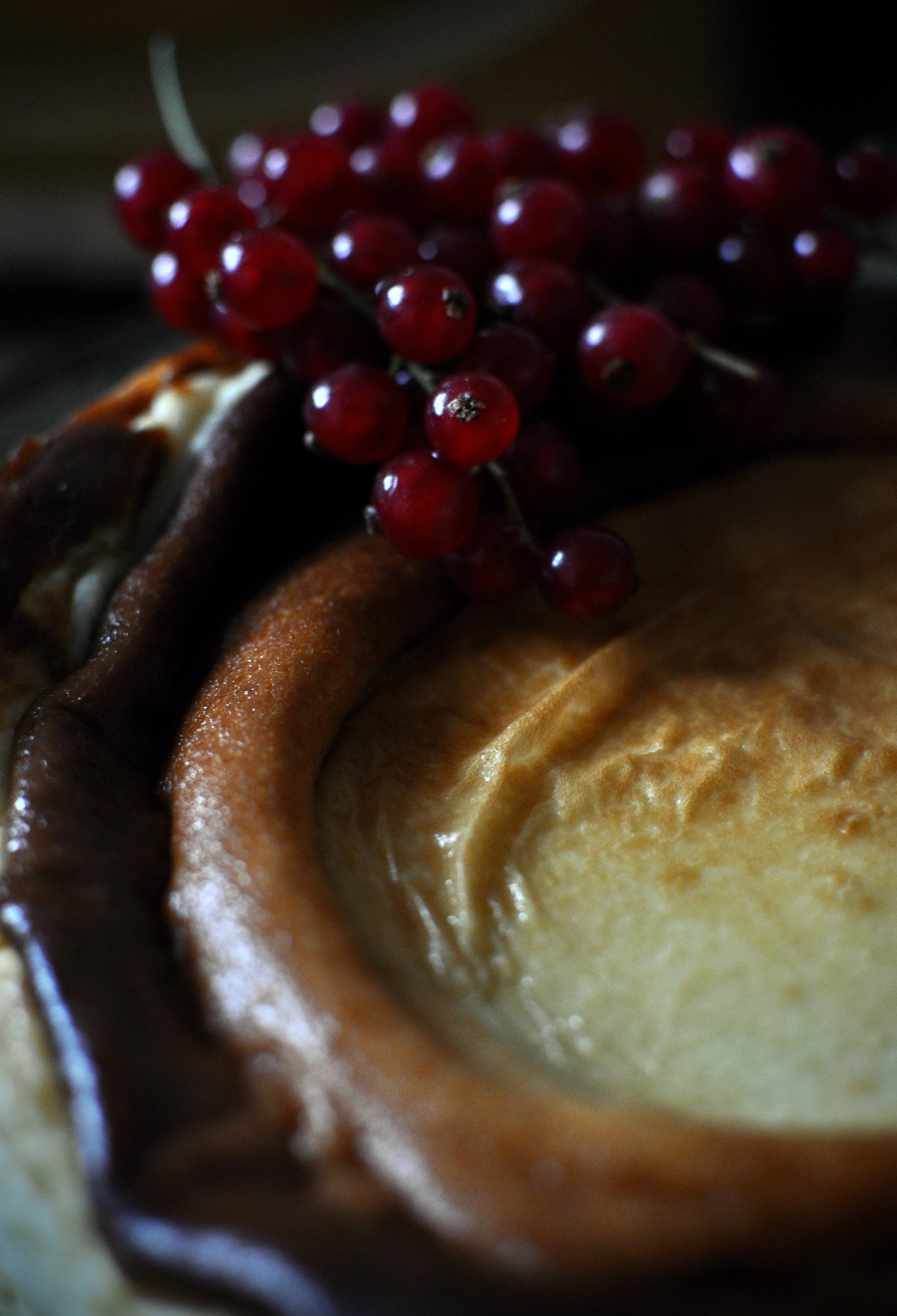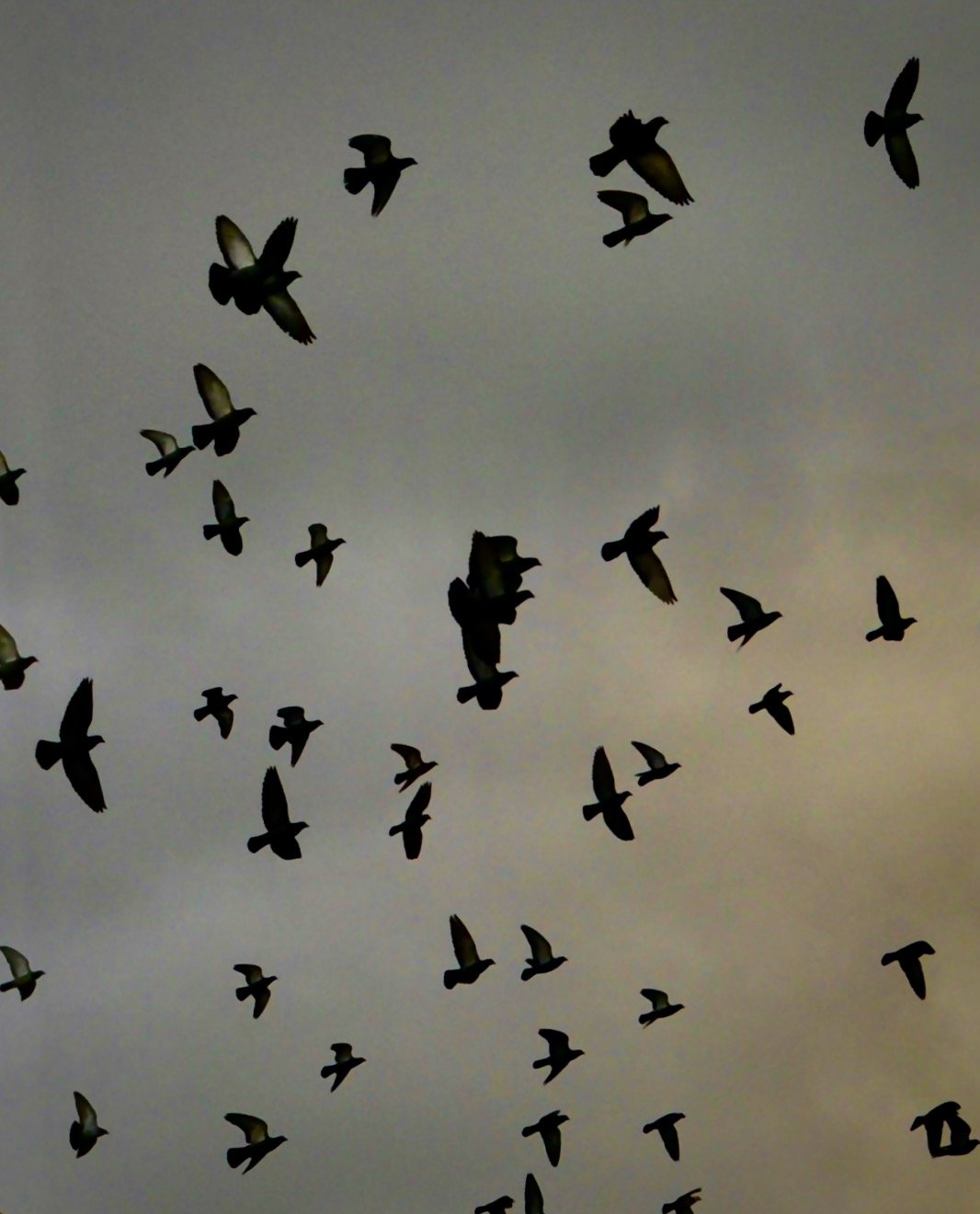- FEBRUARY 2023 -
The trees in the village are covered with beautiful lichen. 村の木々を覆う美しい地衣類
Hello, everyone! I hope you’ve all been well. In Scotland, we still have freezing temperatures at night, but it’s also the season when we enjoy listening to blackbirds singing so beautifully in the morning.
Here is my February photo journal. I hope you enjoy it.
こんにちは。皆様、お元気ですか?
スコットランドは、まだ氷点下の気温の日も続いておりますが、朝クロウタドリが美しい声を聞かせてくれる季節となりました。
如月のブログ、お楽しみ頂けますように。
- 24 SEASONS IN SCOTLAND -
Beginning of Spring [4Feb-18Feb] / Rainwater [19Feb-5Mar]
二十四節気:立春 [2月4-18日] / 雨水 [2月19日-3月5日]
- COUNTRY WALK JOURNAL -
One morning in February last year, a roe deer escorted me to a secret garden of snowdrops.
It’s deep in the forest, which I named “Rabbit Hole”. The snowdrops were quietly but steadily preparing for the spring during the whole winter under the frozen ground.
昨年の二月。
”スノードロップの群生する世界がこっちに広がっているよ“ と教えてくれたのは、一頭の鹿。
そこは以前、”兎の穴”と名付けた森の奥。スノードロップは、冬の間もずっと凍てつく地面の下でひっそり着実に、春の準備をしていました。
This young swan was born around Christmas time, I wonder? When I pointed the camera at her (or him?), she got out of the water and came right in front of me. I'll bring you a snack next time!
湖周辺で暮辺りに生まれたのか、季節外れの幼い白鳥。カメラを向けたら水から上がって、直ぐ目の前まで来てくれました。次はおやつを持ってくるからね。
DAY OUT JOURNAL
- Glasgow, Scotland -
At the end of January, we visited Glasgow to see one of our friends from Wales. We had some time before meeting him so we decided to have brunch.
先月末、ウェールズ時代の友人とグラスゴーで会いました。約束まで時間があったのでブランチをすることに。
The café is run by the same owner of the fruit& vegetable shop, called Roots, Fruits & Flowers, established in 1980. The shops are next to each other in the charming 19th century building called Caledonian Mansions. There were many customers with dogs – the café seems to be popular with Glaswegian.
こちらのカフェ Roots, Fruits & Flowers は、1980年に八百屋さんからスタート。現在は併せてフラワーショップ、デリカテッセン、カフェを19世紀のカレドニアンマンションと呼ばれる美しいレンガ造りの建物で経営。それぞれが隣り合わせにお店がつながっています。犬を連れているお客さんも多く、地元っ子中心に一日中行列が出来ているようです。
I had a smoked salmon on sourdough open sandwich. The porched eggs were very rich and delicious. We popped in the delicatessen too and found lots of wonderful products.
私は、近年イギリスで大人気のサワードーのオープンサンド。スコットランド産スモークサーモンは勿論、ポーチドエッグの卵が濃厚で美味しかったです。この時は、デリカテッセンで干し棗などのお土産を買いました。
On the way to the subway station, we found a lovely second-hand book shop. Chris bought me a great book featuring Henri Rousseau’s art.
地下鉄に向かう途中、カフェの並びに古本屋産を発見。山田五郎氏 [オトナの教養講座] を観て以来、大ファンになったアンリルソーの画集を購入。
- BOOK JOURNAL -
用 の 美 柳 宗悦
The Beauty of Everyday Things
by Soetsu Yanagi
(Note: found at Rijksmuseum, Amsterdam)
Born in the late 19th century, Soetsu Yanagi was one of the most well-known activists of the Japanese Folk Crafts, Mingei, movement. He was a philosopher, historian and poet and developed a theory as to why certain ordinary daily objects, made by unknown craftsmen, were beautiful and precious. In 1936, he and his fellow friends established the very first Japan Folk Crafts Museum and it’s still one of the most popular museums in Tokyo.
The book is a collection of Yanagi’s essays, lectures and a letter. Each section features a specific subject or a traditional craft. You might either love the book or hate the book but at least it’s definitely thought-provoking.
He wrote that Mingei are crafts which are handcrafted mass-produced objects for daily use in common place-settings made by anonymous artisans. In order to be called Mingei, for the essential feature, Yanagi says it must be created by hand to fulfil a practical purpose with an honest and sincere attitude. In other words, not for viewing pleasure, but that beauty can be found in ordinary and utilitarian everyday objects.
I particularly enjoyed the chapter called “WHAT IS PATTERN? (1932)”. His profound insight into patterns is very inspirational. He explains his thoughts with bamboo as an example, comparing real bamboo and a bamboo pattern. He says the real bamboo and the pattern are exactly the same thing. He claims if you focus on the essential element of beauty in bamboo – both the one in the natural world and the one by man’s creation, they are the same thing.
The chapter called “THE JAPAN FOLK CRAFTS MUSEUM (1947)” was also really thought- provoking. It made me think how to balance between consistency and flexibility in creative work. Yanagi and his fellow friends selected works for their museum display only by their own intuition for beauty they believed the crafts held. They didn’t consider how historically or archeologically significant the work was, how rare the work was or if the work was sealed or signed. They selected the works only when they thought the work had a high aesthetic standard and an educational value to help the viewer learn the real beauty of the artefact.
I thought consistency would be formed when you have a clear vision of your idea, while flexibility is required when the work is not just for yourself but for audience. Yet as he says, if you follow your own intuition, consistency and flexibility could be the same thing as in his idea about real bamboo and a bamboo pattern. As a result, you must develop your own reliable intuition of beauty which won’t be affected by your everyday mood.
昨年夏、村のパブで毎月開催される少人数グループの読書会に誘われ、メンバーになりました。
そこで今月は、最近読んだ柳宗悦「用の美」をご紹介致します。
* * *
19 世紀後半に生まれた柳宗悦は、日本の美術工芸、民藝運動の中心的存在でした。彼は哲学者、歴史家、詩人であり、名も無い職人によって作られた普段使いの品々がなぜこれ程美しく貴重であるかの理由についての独自の哲学を見出しました。1936 年、彼とその同志たちは、現在も東京で最も人気のある美術館の 1 つである日本民藝館を設立しました。
この本は、柳のエッセイ、講義、手紙のコレクションで、各セクションは、テーマ毎に彼の美に対する熱い思いを紹介しています。 彼の思想や延いては人間性についても、国内外で様々な意見があるようですが、何れにせよ色々と思いを巡らされる内容でした。
個人的に「模様とは何か (1932) 」という章が興味深かったです。 竹を例に取り、本物の竹と人間の作り上げた竹の模様を比較しながら、パターンに対する彼の深い洞察を展開します。彼は本物の竹と竹の模様は全く同じものであると説きます。竹の美しさの本質的な要素に焦点を当てれば、自然界のものと人間の創造物は同じものであると彼は主張します。
「日本民藝館について(1947年)」では、クリエイティブな仕事における一貫性と柔軟性のバランスについて考えさせられました。柳と彼の友人たちは、自身の直感だけで、美術館に展示する作品を選びました。作品が歴史的または考古学的にどれほど重要であるか、どれほど珍しいか、または作品に印章や箱書きが有るかどうか等は考慮されませんでした。彼らは、その都度、鑑賞者が工芸品の真の美しさを学ぶのに役立つ高い美的基準と教育的価値があると感じた場合にのみ、作品を展示品として選択して行きました。
そこから私が思いを巡らせたのは、自分のアイデアに対して明確なビジョンを持っている場合に一貫性が形成され、観客/コミュニケーションの対象が存在する場合には、柔軟性・バランスが求められると思いました。でも彼が言うように、自分の直感に従えば、一貫性と柔軟性は、本物の竹と竹の模様が同じであるという考えの如く、同一にもなり得るのでしょう。その為には、きっと日頃から日々の気分に左右されない、確かな美に対する直感を養う必要があると感じました。
Chris made a Basque cheesecake so I used a couple of Mingei style plates for photoshoot from our kitchen cupboard.
クリスがバスクチーズを焼いたので、家にあった民芸スタイルの焼き物にあしらってみました。
In the 24 Seasons calendar for February, we have the ‘Beginning of Spring’, Risshun, and ‘Rainwater’, Usui.
When the Rainwater season starts we begin to display the Hina Dolls which will be used to celebrate Girls’ Day on the 3rd of March. This is because water is regarded as the origin of all life and the idea of becoming a mother connects to the growth of the girl.
I found it interesting that water and rain, like the moon and women are Yin according to the Yin and Yang philosophy.
The photo of the Hina Dolls is from an old post, March 2020.
I hope you all have a lovely March. Thank you for visiting my blog.
さて、三月は雛祭り。二十四節気は雨水の頃にあたります。古くから雨水に雛人形を飾るのは、水があらゆる生命の始まり、母であるという考えを基に、女の子の成長と重ねた縁起にかけたものだそう。陰陽説でも、水や雨は月同様、女性の属する”陰”であるとのこと。
写真は、以前ご紹介した母手作りの木目込み雛人形。
皆様にとって、素敵な弥生月となりますように。ブログ訪問ありがとうございました。
East Wind Melts the Ice [4-8 Feb] / Bush Warblers Start Singing in the Mountains [9-13 Feb] / Fish Emerge from the Ice [14-18 Feb]
Rain Moistens the Soil [19-23 Feb] / Mist Starts to Linger [24-28 Feb] / Grass Sprouts, Trees Bud [1-5 Mar]
七十二候:東風解凍 [2月4-8日] / 黄鶯睍睆 [2月9-13日] / 魚上氷 [2月14-18日]
七十二候:土脉潤起 [2月19-23日] / 霞始靆 [2月24-28日] / 草木萌動 [3月1-5日]
Glasgow
